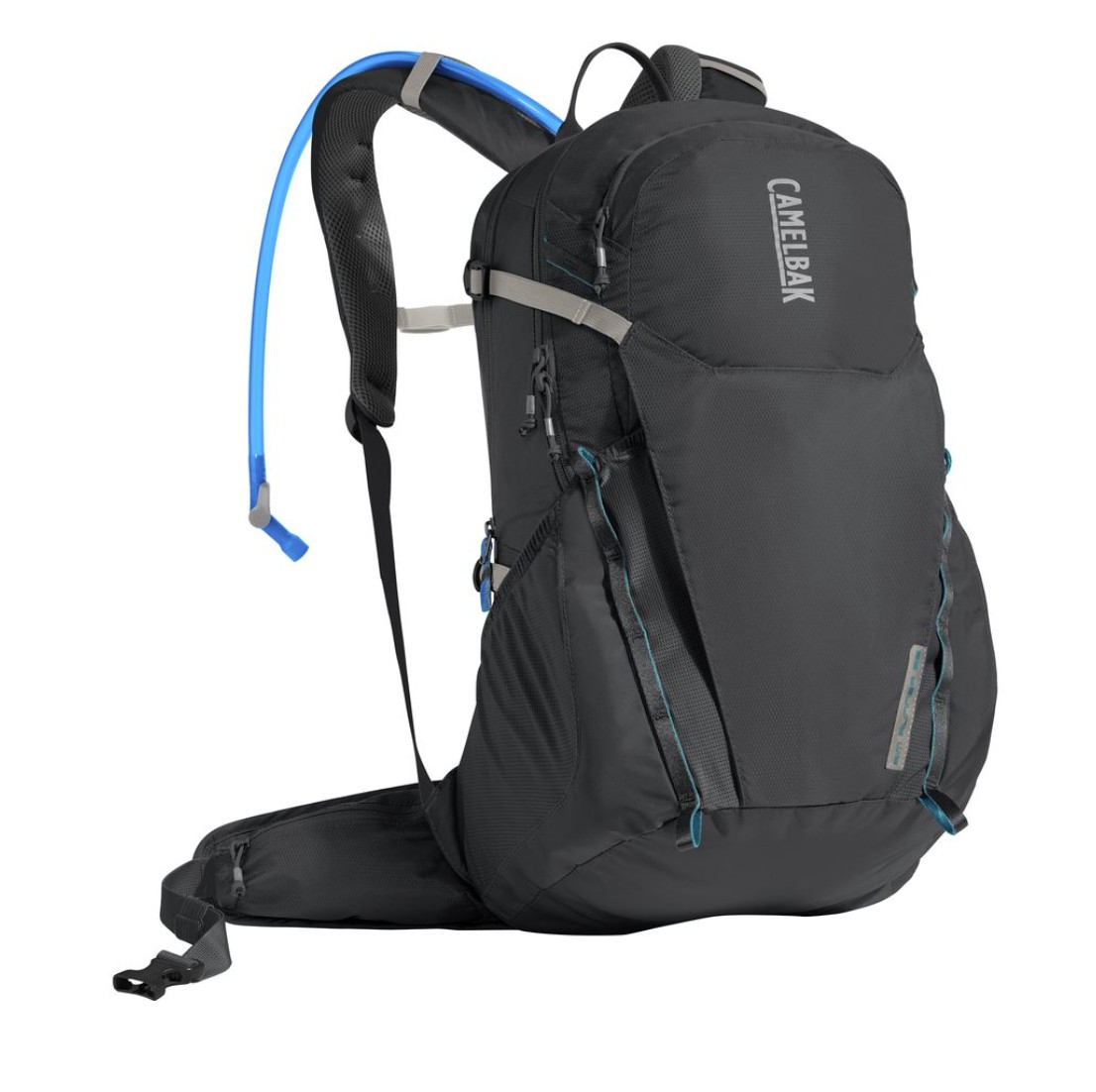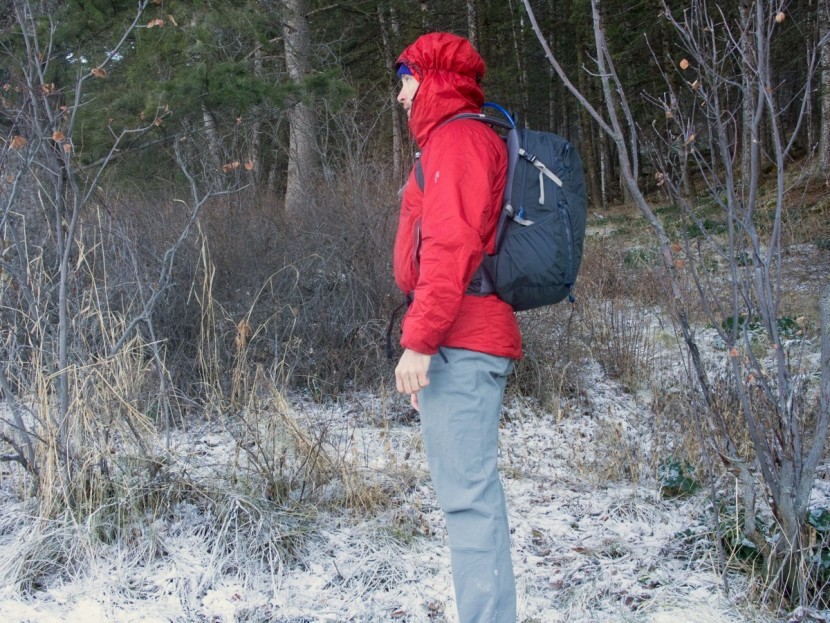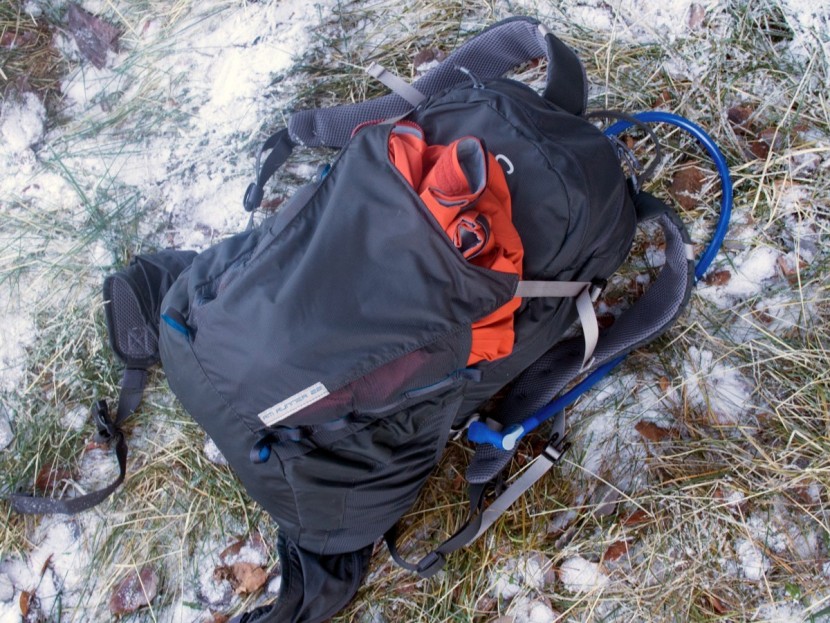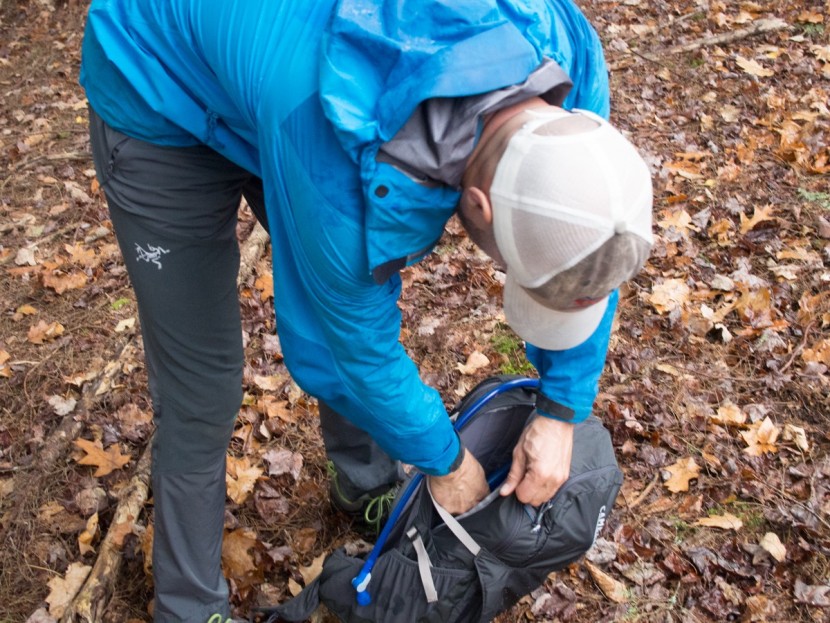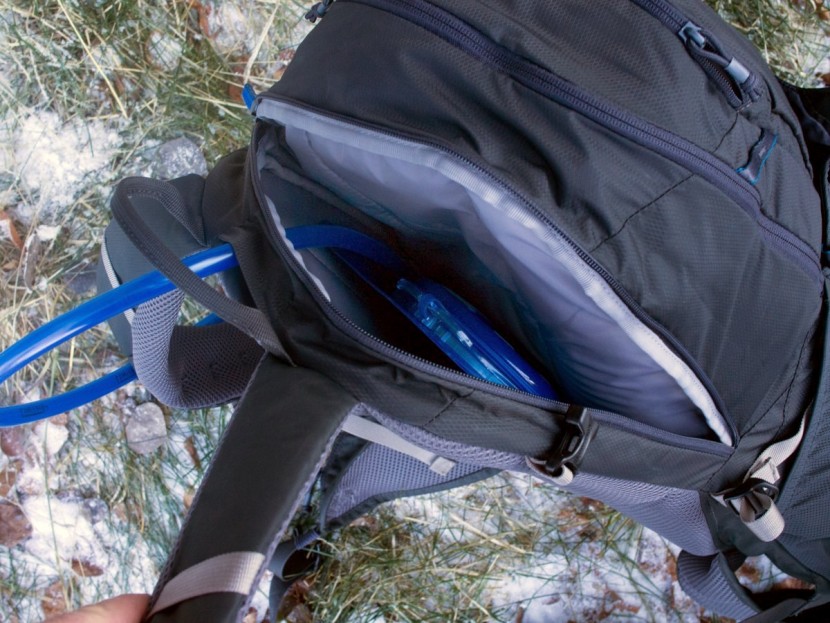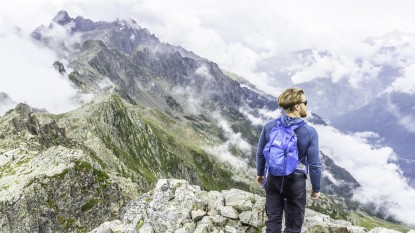CamelBak Rim Runner 22 Review
Our Verdict
Our Analysis and Test Results
Of the fully “structured” daypacks, the Rim Runner scores below the others. It has decent features, and is comfortable enough, but just doesn't set itself apart from the rest of the packs in our review.
Comfort
Comfort is king. The packs we tested deliver a wide range of comforts. Comfort, especially under load, is a function of padding, weight distribution, sweat and heat management, and fit. Padding in the CamelBak is a fairly typical mesh covered foam style. Weight is distributed by a back panel that is less stiff than the other packs in this weight class and borne by a waist belt that has a strangely narrow and relatively unstable attachment. The waist belt, additionally, while wide, is also quite soft. To truly spread the load to your hips, a more rigid belt would be more effective. Finally, the quilted, mesh covered foam offers minor venting channels, but the back panel is fairly sweaty, as compared to some of the others.
The closest comparison in this test are packs with similarly semi-rigid back panels. These contenders are engineered similarly. They both feature, for instance, wide, padded waist belts and structured back panels. Among these types of packs, the CamelBak is one of the least comfortable. Others have stiffer waist belts that transfer more weight and have back panels that are more breathable. That said, this pack is still a comfort upgrade over soft-backed or minimalist-suspension packs.
Weight
"As is", the Rim Runner 22 is one of the heaviest packs we tested, weighing in at 32 ounces. However, it is the only bag that came with an included hydration reservoir. Remove that reservoir for weighing in, and the weight of the CamelBak comes down into the same realm as the other close competitors. In any event, this pack and those like it are certainly not in the “ultralight” category. We have reviewed bags in our mountaineering backpack review with three times the capacity that weigh the same. With the CamelBak, you get features and pay with weight.
Versatility
A daypack is versatile if it is suitable for different sorts of day trip activities. Size is the main criteria that determine a pack's versatility. On the large end of the spectrum, daypacks are more suited to occasional forays into colder conditions, more technical pursuits, and for travel and day-to-day use. In this way, just looking at size, the CamelBak is interesting. CamelBak claims 22-liter capacity. Our objective measurement found the actual capacity to be 18 liters. This is right in the same class most award-winning packs. However, others are noticeably larger. Other things that make a daypack versatile are the pockets and organizational features. In this way, the CamelBak does well, with a total of six pockets in addition to the main compartment.
Ease of Use
The zippers, straps, and buckles of the CamelBak are all smooth and relatively large. Even with gloves on, all can be operated easily. The straps that tighten the rear “stuffable” pouch cover the zipper of the main compartment, which can slow access to that main compartment. The stretchy side pockets are medium-sized; just big enough to hold a one-liter bottle without additional strapped security. The waist belt pockets, because of the attachment point of the waist belt, are tricky to get into because the shoulder straps cover the opening. The name “CamelBak” has become synonymous with “hydration system”. They've been in that business a long time, and their hydration reservoir and hose system show this. The included reservoir and hose is excellent, leading the field.
The best and worst part of the hydration system is its proprietary attachment into the backpack. In a cleverly simple solution, the bladder hangs by a rigid hook from a built-in strap system inside the hydration sleeve. This is simultaneously secure, keeping your bladder from bunching up in the bottom of the pack, and quick to insert and remove. However, there is not a way, without modification, to hang your own bladder, should you prefer that of a different brand.
Durability
We found very little to note about the CamelBak's durability. The straps, zippers, and seams remained intact through moderate use. Our experience with other CamelBak products, over longer-term testing, suggests that their build quality is good. The fabrics they chose for the Rim Runner are certainly sturdy enough to last for years and years.
Value
The Rim Runner is expensive. For a price similar to higher performing packs, you also get a hydration bladder, which increases the value. However, hydration bladders can be found relatively cheap, and this pack's high cost isn't well-justified by its lack of comfort or versatility.
Conclusion
The CamelBak Rim Runner is decent, in a field of excellence. Other packs edge ahead in overall performance or value, but you can't go wrong with this one, especially if you want their excellent hydration system included.


